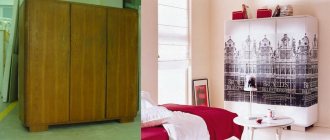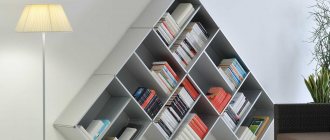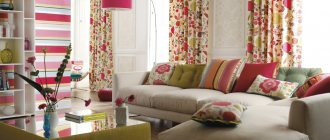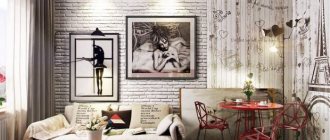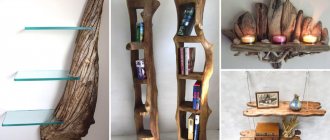The ancestors of foam plastic decorations were architectural ensembles in Ancient Greece and Rome. At that time, heavier and bulkier substances were used as materials for stucco; they gave the structure a majestic and noble appearance. Only a wealthy person could decorate his home in this way. Nowadays, foam jewelry is not inferior in beauty and grandeur to its distant predecessors. They became available to anyone.
Foam decor in a classic style
Foam plastic facade decor
Painted foam decor
Architectural elements made of foam plastic: assessing the possibilities
Before you renovate the interior of a bedroom, corridor or hall, as well as the external facade of the house, you should decide exactly how you see its changes. Architectural elements made of foam can be present in a wide variety of unexpected designs. It is advisable to make a semantic load on this subject or organically introduce it into the planned project. It all depends only on you and your desire.
Foam decor in the shape of a pumpkin
Foam fireplace portal
3d foam decor
The functional side of working with foam products is no less important than the decorative one. Experienced builders love polystyrene foam for its ease of use, light weight and ease of use. It is very easy to saw at any angle, paint, and varnish. The cost of the material is just a penny, and this is a significant plus.
Foam decor in the living room
Foam columns for interior
Foam wall decor
Which paints should I choose, matte or glossy?
In addition to composition, paints can vary in degree of gloss.
Glossy paints visually increase the height of the room. The glossy surface is less susceptible to contamination and is easier to clean. But at the same time, giving the surface shine, they will make all irregularities noticeable. Matte - will help hide surface imperfections. We paint in one direction then, then at an angle of 90° to this movement
It is worth considering the question of how to paint polystyrene foam, or rather, some of the features of this process. Before starting painting, it is worth applying sealant or putty to the joints between the tiles, thanks to which the paint will lie more evenly. To reduce paint consumption, you need to pre-treat the ceiling with a primer. If the ceiling tiles are embossed, it is better to paint them using a special sprayer. You need to start painting not from the center, but from the corner. Only with the correct choice of paints, based on the previously described properties, and compliance with the specifications of painting work, can you obtain a high-quality result.
Decorative columns as an available attribute
The first thing we will look at are decorative columns. This is one of the basic figures made of foam plastic, which is used both outside and inside the house. The column consists of three parts: the trunk (can be either a cylinder or a polyhedron), the lower part is the base and the upper part, supporting the vault, is the capital. It is columns that are used in “aristocratic” styles, when there is a specific goal - to emphasize the wealth and status of the owner.
Foam ceiling decor
Decorative rosette made of foam
Foam molding with gilding
Bulky and wide products attract attention and become the central figure of the interior (exterior); small narrow columns can elegantly frame a fireplace or sitting area.
Such identical and at the same time different columns
Foam Wall Panels
Foam border
Installation of panels
Material calculation
Before you begin, you need to calculate and purchase foam ceiling panels. To do this, you will need to measure the ceiling area in the room.
The calculation is carried out as follows. For example, your room measures 4 by 5 meters, therefore the surface to be finished will be 20 m². For one square meter you will need to buy four segments of tiles of standard sizes 50x50 cm. For the entire ceiling you need to purchase 80 tiles. To the resulting figure, add a few more pieces in reserve.
Glue selection
Another important point at the preparation stage is the choice of suitable glue. It is better to glue tiles using universal compounds. For example, Moment or “liquid nails”. They have a thick consistency and harden in 15-20 minutes.
If the ceilings in your room are uneven, you can use finishing putty as an adhesive base. This way you will simultaneously level the surface and finish. To prepare the mixture, you need to stir dry putty in water, add PVA glue to the resulting mass in the proportion of 200 grams of glue per 1 kg of putty.
Preparing and marking the ceiling
At this stage, you need to remove the old finish from the ceiling surface, repair large ceiling defects with plaster, and then putty the base with two layers of putty mixture. Next, the surface is primed. This will improve the adhesive properties of the glue and protect the ceiling from mold and mildew.
If installation is carried out diagonally, markings must be applied so that the foam boards lie flat. To do this, determine the center of the room by drawing diagonals to opposite corners; their intersection will become the starting point for work. To determine the parallel direction, you will need to draw two more stripes - through the central part of the ceiling to the opposite walls. This method is applicable for square rooms.
If the room is made in the shape of a rectangle, the marking will be more complex:
- the center of the room is also located by drawing diagonals;
- if it coincides with the place where the chandelier is fixed, they begin gluing from there;
- if the chandelier is moved away from the center, the starting point of installation work must be moved towards it;
- now you need to measure the gap from the starting point to the nearest wall, use a paint cord to draw four squares, draw diagonals again;
- Thus, you will get guides for attaching the tiles, along which the edge of the first row will be aligned. The more accurate the measurements are, the easier it will be to glue the segments.
Pasting process
As already noted, it is best to start gluing the tiles from the center, then the pattern formed with its help will be smooth and clear. Be sure to pay attention to the reverse side of the segments during the installation process. There, with the help of inscriptions or arrows, the correct direction in which the panels are laid will be indicated.
Apply glue around the perimeter of the element in small portions. To enhance the reliability of adhesion, it is allowed to coat the diagonals of the tiles with glue. After applying the glue, wait a few seconds, then attach the element to the ceiling. Press it gently and remove excess glue with a soft cloth.
After you finish with the last whole slab, you will need to measure the remaining open distance and cut out an element that fits it in size.
At the final stage, a decorative plinth is installed, which will hide the gaps between the ceiling and walls and give a finished and harmonious look to the room.
Rules of care
It is not enough to properly glue foam panels to the ceiling; you need to know how to properly care for them. Otherwise, in a year, maximum two, they will lose their original appearance, and you will have to make repairs again. Care requires compliance with the following rules:
- laminated tiles can be wiped with a damp cloth, and dry cleaning can be carried out using a soft brush or vacuum cleaner;
- Small stains can be removed with a simple eraser.
And remember that the surface of the slabs is afraid of UV radiation. The abundance of sunlight will have a negative effect on the coating.
When installing lighting devices, maintain a minimum distance from the ceiling to the lamp - at least 30 cm.
Pilasters are in fashion now
This type of jewelry is similar to a column, but differs from it in its smaller size. Pilasters are attached to walls, doorways, fireplaces, niches and other elements. The room visually becomes higher, and the interior becomes more sophisticated. With their help, you can frame a certain area in the room, draw attention to an object, or visually narrow a wide wall.
Give your home a sleek look!
Foam decor
Foam facade decor
Topiary
Topiaries are made from foam balls - artificial trees with a round crown. A stick-trunk is attached to the ball, and artificial flowers, fabric or coffee beans are glued on top with hot glue. The finished craft is complemented with decor and secured in a miniature pot.
Pediments: a hint of status
Expanded polystyrene decorations on the pediment are mainly represented by decorative elements in the form of waves, bends and curls. They are an addition, a crown to the exterior of the house, decorated with columns, pilasters and other pompous elements. The monogram, located in the center of the composition, speaks of belonging to a famous or ancient rich family.
Even if you do not come from a noble family, who is stopping you from showing everyone that this is not so? Simply hang a framed monogram with your initials on the gable
Foam tiles
Foam garland
Ornaments
These decorative elements can serve as part of the composition (insert) or act as an independent decoration.
Volumetric patterns located above the door frame will give it an unusual, more elegant look. With the help of ornaments you can decorate a niche, complementing and emphasizing the wall sconces.
Arches – eternal youth of decor
The functionality of the arch lies in the fact that it saves space when the dimensions of the apartment do not allow the installation of doors. Through it, light penetrates the room, visually expanding the boundaries. Installation does not require special skills; the cost of foam materials is lower than doorways. Expanded polystyrene structures will hide the shortcomings that remained when the doorway was cut out. All this makes foam arches an excellent solution both from a practical and aesthetic point of view. There are several types of models:
- active (complex shape) and passive (simple);
- classic (with a regular semicircle), ellipsoidal (flattened), portal (square shape);
- oriental, trapezoidal, mixed;
Each of them suits a specific interior style, as well as your taste.
New Year's decor made of polystyrene foam
Foam decor in Roman style
Foam decor in the form of a tree
Important! If the doorway is narrow, then it is better to refuse to install an arch, since it will only emphasize the small dimensions: the entrance will seem even smaller than it actually is. The solution is to expand the parameters of the opening, increasing them on top and on the sides.
The use of such designs is also possible outside the home (for example, as a wedding attribute). The arched entrance to the gazebo will look great.
Many brides are delighted with such a romantic arch
Backlit foam tiles
Architectural decor made of foam plastic
Tile layout options
Installation of slabs is often performed from a corner. This method is only suitable for ceilings with ideal dimensions. If the apartment is typical, then you can try diagonal placement. Thanks to this method, the space will be visually increased.
If a white ceiling seems uninteresting, you can give preference to multi-colored slabs. Most often, consumers choose close or contrasting shades. All products are laid in a checkerboard pattern or in the form of a serpentine.
In some cases, it is advisable to glue panels onto a wooden or metal frame. Thanks to this, you can hide utility lines or disguise an uneven ceiling.
From the center of the room
This method is used most often. Its popularity is explained by its neat appearance and symmetrical arrangement of finishes. Installation begins by finding the center of the ceiling and applying markings to the surface. The first four tiles are laid so that their corners meet at this point. If there is a chandelier, its position should coincide with the center of the room.
From the chandelier
If the chandelier is not in the center of the ceiling, the design using the two previous methods may not look aesthetically pleasing. Therefore, the light source acts as a reference point from which gluing begins. The first four tiles will converge at the fixture's mounting point. A hole for the chandelier is cut out at the joining corners. You can also make a hole in the middle of the tile and start laying from there, as in the previous method.
From the corner
In small rooms, gluing of tiles begins from the corner that is most visible from the door. This avoids wastage of material. Otherwise you need to cut a lot of panels.
Keystones are not a whim, but a necessity
Foam capstones on building facades look very impressive. They are installed above window openings and arches, focusing attention on these architectural elements. This decoration is optional, but adds completeness to the design. It is important to consider that all foam plastic products do not change their appearance when installed outside the home, they are durable and environmentally friendly.
Restrained. Elegantly. Status.
Foam decor on the ceiling
Carved decor on the ceiling made of foam plastic
Material calculation
It is not difficult to calculate the number of foam tiles for the ceiling. To do this, you will need to calculate the area of the ceiling surface. The standard dimensions of the segments are 50x50 cm. To cover 1 m² of ceiling you need 4 such parts. Therefore, to determine the number of tiles, the area of the ceiling surface is multiplied by 4 segments.
Corner elements as part of the decor
On the outside of the building, the corner elements are represented by horizontal wide stripes that start from one end of the building and go to the other. There is an imitation of a protruding stone. It looks very impressive in tandem with columns and monograms. Finishing work goes very quickly. In the interior, corner elements are used as a transition between moldings or ceiling plinths. This is not just a “corner”, it is a spectacular decoration that organically fits into the line.
Foam decor in the kitchen
Foam decor on the coffered ceiling
Foam decor in the interior of the house
Recently, the use of vertical moldings, combined into a square or rectangle, which focuses attention on a particular wall, has become popular. Inside such a square you can hang a painting, a collage of photographs or a three-dimensional panel. In this case, the corner elements made of foam plastic may not have a “corner” shape at all.
Corner elements catch the eye. Make your home stand out from many!
Foam decor on frame
Foam moldings
The best manufacturers of polystyrene foam boards
Craftsmen prefer trusted manufacturers, because for a fragile material, the first among indicators is reliability. The Armstrong company produces tiles with improved performance properties. She specializes in making options of any shape, from classic to non-standard. The German manufacturer Ormit produces a wide range of moisture-resistant options. Pays extra attention to the range of shades and sizes. The Antares brand produces a variety of products, from all types of ceiling tiles to decorative corners and baseboards. The Chinese company Matrix has focused its activities on the production of thin tiles. Another Chinese manufacturer, Angara, follows approximately the same policy. Produces affordable options with a thickness of up to 8 mm.
Along with the goods, buyers are also given quality certificates.
Balustrades - timeless classics
Using a foam balustrade, you can make an edging for a terrace, balcony, staircase (both inside and outside the building), and decorate a window by placing them under it. This is a universal element, and it is polystyrene foam that becomes the leading material for its execution.
A wonderful series of balustrades. Who would have thought that this is a solid element?
Foam decor in the toilet
Foam ceiling tiles
Preparing the surface for gluing ceiling tiles
The final result of pasting the ceiling depends on the preparation of the ceiling.
The whitewash from the ceiling is completely washed off. Wet the ceiling with a wide brush and remove the whitewash with a spatula. The work is dirty. Make sure there is as little trash as possible. Cover all furniture with film. Cover the floor with newspapers in several layers. With these preparations you will save yourself from unnecessary cleaning. Covering the floor with newspapers is more convenient than with film. After removing the whitewash, when all of it remains on the floor, all that remains is to carefully roll up the newspapers.
You can glue tiles on old wallpaper, if it holds well and does not lag behind the ceiling. If the wallpaper is coming away from the ceiling, it needs to be removed. Wet the wallpaper with warm water and remove it with a spatula.
Prime the plastered or painted ceiling. Ceilings that have been cleaned of whitewash or old wallpaper are also primed. A ceiling from which the wallpaper has not been removed does not need to be primed.
Rosettes are on the crest of popularity again
Ceiling rosettes for chandeliers are gaining popularity again. They are installed due to the sophisticated look they give to the interior, highlighting the lamp favorably. The traditional shape is a circle, but you can find something more original.
Foam plastic decor in the interior of the apartment
Stone-like foam decor
Volumetric foam decor
Thanks to its low weight and unpretentiousness in choosing glue, installation is very simple. It is worth considering in advance that the rosette can be painted in any color at your discretion.
An unimaginably wide variety of forms. One appointment.
Imitation foam brick
Foam ceiling tiles
Layout schemes
Ceiling tiles are glued in three ways: in even rows, offset to the floor of the element, and diagonally. Depending on the layout scheme, a different visual effect and perception of the room is obtained. Let's consider each option in more detail.
In straight rows
This is a classic layout when the edges are parallel to the walls (in a rectangular or square room). This method allows you to hide small unevenness in the ceiling if you lay tiles of two shades in a checkerboard pattern.
With offset
The option resembles the classic cladding method, but the tiles are shifted by half an element relative to the previous row. This requires more precise marking. The original design gives the room some lightness, but the products must be chosen with a chamfer, since it makes no sense to glue tiles in this way without seams.
Diagonally
The main advantage of the layout is the visual increase in space. The circuit requires the most effort because it requires a more precise fit. In addition, material consumption increases. The diagonal laying method allows you to hide the slight curvature of the walls.
Decoration of the facade and installation of stucco molding from foam polystyrene: everything is simpler than it seems
The facade is the calling card of your home; it is the “clothing” by which it is greeted. That's why it's important to decorate it as beautifully and elegantly as possible. Facade cladding materials must not only be excellent, but also durable, as they will be exposed to rain, wind, sun, low and high temperatures. By purchasing products made from foamed polystyrene, you ensure easy transportation and installation, as well as a wide variety of decorative elements, and the ability to implement interesting ideas. At your disposal are keystones, columns, arches, monograms, moldings and other foam wall decor. By positioning the stucco correctly, maneuvering between the variety of species and the number of elements, you can create a unique architectural masterpiece.
New Year's polystyrene foam decor
Styrofoam decor
Foam star decor
Installation is quite simple and quick. It involves “attaching” to glue, which can be combined with fastening to anchor nails for durability. The glue is applied only to the surface of the part. This should be done with a spatula, evenly distributing the substance. You need to glue the part evenly right away, and then wait a little. The next one should be placed at a distance of 2 mm from the previous one.
Foam decor on the chest of drawers
Fiberglass composite
Another innovative material would be fiberglass composite or fiberglass. It is characterized by its low weight, high strength, corrosion resistance, durability and environmental friendliness.
Fiberglass is painted during production by adding pigments, but it can also be painted after finishing.
Used for indoor and outdoor decoration. Due to its cost, fiberglass composite is used less frequently than polystyrene foam and polyurethane, but the durability and beauty of such stucco molding are undeniable.
Features of interior decoration with foam decor in our time
Expanded polystyrene products are used for interior decoration of rooms. With the help of polyurethane foam parts, you can emphasize the sophistication of the interior space and add an unusual accent to it (for example, in the form of rosettes or curly elements). Foam cornices in tandem with lighting will provide volume to the ceiling, and pilasters near the fireplace will add grandeur. Important! There are so many options for decorating a room that you can lose your head. Remember that everything is good in moderation. Excessive curls and pomposity can be a sign of bad taste.
Foam decor on panels
Preparatory work
Before you begin laying foam tiles, the ceiling surface must be prepared. The main thing in this matter is to completely get rid of the remnants of the old finish. Depending on its type, cleaning methods differ.
- The wallpaper is moistened with water, wait until it is saturated and damp, and then removed from the ceiling using a narrow spatula. Afterwards the surface is cleaned of glue residues.
Removing wallpaper from the ceilingOther devices and tools for wallpaper removal
- A narrow putty knife can also be used to remove old ceiling tiles or plaster.
Removing whitewash from the ceiling - The whitewash is washed off with plain or soapy water in two or three steps.
Whitewash is washed off with a sponge - A fairly old layer of oil paint is removed (or rather, scraped off) with a spatula.
- Water-based paints are washed off with water, like whitewash.
- For paints that cannot be scraped off or washed off with water, various solvents are used. But after their use, the ceiling should be about class=”aligncenter” width=”800″ height=”800″[/img]Prestige remover, gel, 0.8 kg
Advice! If the layer of plaster does not chip off or collapse when lightly tapped with the handle of a spatula (or other tool) and does not have large differences in height, this layer of finishing can be left and seamless ceiling tiles can be glued directly onto it.
Step-by-step description of preparatory work.
- The ceiling is inspected, all kinds of defects and height differences are identified.
- Chandeliers and other lighting fixtures are removed, the wiring is isolated or de-energized, if possible.
- If the difference is more than 4-5 millimeters, then the ceiling must be leveled using putty.
Interior styling with foam decor: the variety is endless
Try to achieve the most unexpected effects in various styles using stucco finishing.
Foam decor in a Scandinavian interior
Classic and neoclassical: something that will never go out of style
A feature of these areas is the traditional, calm and solemn design of the premises. They are characterized by the use of columns, pilasters, arches, various moldings, panels, top and border plinths. With the help of sockets the lamp is framed on the ceiling or walls.
Foam decor in the bathroom
Antique style: enjoy the motifs of the ancient world
Often used in the hall or living room. This is sophistication. High ceilings are decorated with ornaments and decorative panels. Window vaults are decorated with cornices and monograms. The main accent on which all attention is focused are the columns and sculptures. In order to visually increase the scale of the structure, these elements are placed under the base of the arch. Visually it seems as if Apollo came down from heaven and holds the vault on his shoulders.
Foam ceiling plinth
Rococo and Baroque as a tribute to the Renaissance
These styles came to us from the distant 17th-18th centuries and brought to the interior a feeling of pomp, majesty, and inexhaustible wealth. At that time, stucco molding was made mainly from gypsum; such decorations were expensive and bulky. This motif has carried over into modern decor.
Stucco foam decor
An abundance of moldings on walls and ceilings, borders, various columns, balustrades, rosettes and many other details, skillfully combined in one room - this is what is necessary when decorating the Rococo and Baroque styles.
Foam decor on a false fireplace
Modern: letting in everything new
Geometric lines are a thing of the past; all features in an Art Nouveau style interior tend to be smooth, which is why design with arches is common. Ceiling vaults are decorated with decorative tiles imitating beams, caissons, and domes. Despite the fact that this style tries to be unlike anything else, the volumetric decoration of the ceiling and decoration with other foam products remain unchanged.
Brick-like foam decor
Eclectic: make your own style
To get eclecticism, mix similar styles (2 or more). A very important point is the correct application of color. The result is an original decoration of the room. In such a situation, any foam part can be used. Foam stucco on the ceiling has already become traditional. Framing doors and windows with the same or similar rims will create an interesting tandem. Kitchen decoration in this style is gaining popularity.
Foam panel
Insulation and exterior finishing of a turnkey house
External insulation of private houses and city apartments with polystyrene foam slabs has now become truly widespread. But the industry produces several types of such slabs.
And they differ not only in cost. The density of the material plays a large, if not the main role. The table below contains data on the main types of foam.
| Marking of foam boards | Material density level | Average price in Russia |
| PSB S 15 | 12 – 14kg/m³ | 2000rub/m³ |
| PSB S 25 | 18 – 20kg/m³ | 2200rub/m³ |
| PSB S 35 | 25 – 27kg/m³ | 2300rub/m³ |
| PSB S 50 | 27 – 35kg/m³ | 2600rub/m³ |
- Now let's look at the purpose. As can be seen from the table, the most affordable is PSB-S-15 and many inexperienced craftsmen, in pursuit of savings, take it. So I strongly advise you not to do this. This material was developed more for packaging goods rather than as insulation. The mechanical strength of such slabs leaves much to be desired, plus they crumble very badly. The savings here are not so big, but I guarantee you a headache with the installation and operation of such insulation;
Types of foam boards.
- PSB-S-25 slabs have already been specifically developed for insulation needs. Now this material is a bestseller. In the middle zone of our great homeland and at the latitude of Moscow, PSB-S-25 foam plastic with a thickness of 50 - 75 mm is used almost everywhere;
- Insulation PSB-S-35 in its characteristics is not much ahead of PSB-S-25. From a practical point of view, I can say that it is certainly more convenient to work with, since it has a higher density. But it makes sense to spend money on it if you plan to additionally decorate the house with foam decorations;
- Polystyrene foam PSB-S-50 is considered the densest in the line. It is very rarely used as insulation for the facade of a house. As a rule, this material is used to make insulating cocoons for non-hot pipelines (ventilation, sewage and cold water pipes), as well as various kinds of decorative elements for interior and exterior decoration.
Foam structure (cellular polystyrene foam).
As for extruded polystyrene foam, I’ll be honest, the material is excellent. As insulation, such slabs can be used everywhere, from the underground part of the foundation to the roof.
It is durable, withstands high pressure along the plane and is absolutely impermeable to moisture. By the way, it is from extruded polystyrene foam that volumetric decorative elements are often made, used to decorate facades and decorate buildings.
Structure of extruded polystyrene foam.
Thanks to advertising in our country, extruded polystyrene foam is better known as “Penoplex”. But Penoplex is just a trademark. There are many other domestic and foreign manufacturers that produce this material.
Technique for installing insulation outside the house
Finishing a house with polystyrene foam on the outside seems complicated only at first glance. In fact, even an amateur who is fluent in a drill and screwdriver can handle it. Personally, at one time, in order to cover a house with polystyrene foam with my own hands, a detailed story was enough.
As usual, any work of this kind begins with careful preparation of the foundation. In new buildings, whether brick, cinder block, concrete sections, or foam or aerated concrete, the walls are mostly smooth.
In this case, it is enough to sweep away the dust and walk a couple of times with deep penetration soil. “Betonkontakt” is most often used, but in addition to it there are a number of high-quality compounds. A good consultant in a hardware store will always advise you.
Apply a continuous layer of adhesive using a notched trowel.
There is an opinion that to install foam plastic insulation, curved walls must be leveled. On the Internet, I have repeatedly come across categorical statements that the maximum curvature along the plane should not exceed 10 mm.
I won’t argue; perhaps there are such requirements somewhere in the specialized literature. But I saw with my own eyes how my friend’s old, pre-war private house, built of rough natural stone, was insulated. Those who have seen such houses know that there is no talk of even walls there at all.
So, no one even tried to level these walls; they simply primed the surface and attached foam insulation to it. This insulation has been installed for about 10 years and everyone is happy with the quality. True, in this case the technology was slightly different from the traditional one.
A set of spatulas for work.
When the walls are smooth, gluing foam plastic on them is a pleasure. Of course, special glue is needed here; it won’t work on a simple cement-sand mortar.
For these purposes, I always use Ceresit CT 83; it is suitable for both cellular and extruded polystyrene foam. Some masters use Ceresit CT 85. In this case there is no big difference, both compositions are of high quality.
Before starting installation, below, on the line from which our insulating layer begins, you will need to attach a metal starting L-shaped profile. Such profiles are available in an assortment; the size is selected according to the thickness of the insulation.
Dry construction adhesive.
Ardent “economists”, instead of a galvanized L-shaped profile, simply fill a horizontal wooden plank according to the level and begin laying the insulation from it. The solution is partly acceptable, because this support is needed only at the beginning, until the glue sets. But still, with a metal profile it is more reliable, plus it protects the end of the foam from “unauthorized” penetration of mice inside the finish.
Metal L-shaped profile.
If your walls are smooth, then construction adhesive is applied to the sheet using a notched trowel with a cell depth of about 10 mm. On concrete and brick bases, you can save a little glue by applying it in fragments (perimeter + center of the sheet).
If you are insulating a house from foam or aerated concrete, then you cannot skimp on glue. It is advisable to apply it both on the wall itself and on the sheet, and in a continuous layer. The fact is that cellular types of concrete are hygroscopic, that is, they strongly absorb moisture. And in this case, the glue will act as a protective plaster layer.
Scheme for attaching a corner to a wall.
Now talk about crooked walls. Finishing walls with a relatively curved surface is not much more difficult. Here a notched trowel, with any tooth depth, will be virtually useless. To fix it, you will need to put “buns” of glue on the sheet every 100 - 150 mm.
Fragmentary coating of the sheet with glue.
Naturally, the composition needs to be kneaded thicker so that it does not spread. The height of such “buns” should be slightly greater than the average depth of the curvatures.
Foam plastic slabs must be laid according to the principle of brickwork, that is, in a running pattern. On smooth walls, the material can be glued in one layer, nothing bad will happen. But I always advise installing slabs in two layers, both on flat and curved walls. By the way, to connect the first and second layers, the same glue is used, only it is applied in a thin layer .
And here it is important that the joints between the sheets in these layers do not coincide. This creates a single, monolithic ball of insulation, without any cracks or gaps.
Installation of foam plastic boards on the wall.
Initially, we cover the house with polystyrene foam, fixing it only with glue, and fill in the inevitable gaps with polyurethane foam. After about 3–4 days, the glue will dry and completely set. Next we have to do plastering.
But before plastering, you still need to install foam trim on the outside of the windows, in other words, make foam slopes. And rub all the irregularities with a special mesh or coarse sandpaper. After all, no matter how hard you try, there will be slight curvatures at the joints in any case.
Each owner decides for himself how to decorate the window façade. If you have limited funds, then the slopes can be cut from the same sheets that were used for the walls. They are then plastered, and as a result everything looks quite decent.
Drill holes for umbrellas.
If funds allow, then you can buy a beautiful and durable decorative frame. Most often it is made from extruded polystyrene foam, plus a layer of polymer spraying is applied on top.
But no matter what slopes you choose, they are attached in the same way. First, the perimeter of the window, if necessary, is additionally blown with foam. When it dries, you will need to cut off the excess and “walk” along the slopes with soil.
Foam strips for slopes sit on “buns” made of construction glue. Plus, I always recommend additionally fixing them with anchors or simple nails. As already mentioned, finishing the facade after insulation with foam plastic is done using plaster, but I devoted the next chapter to this painstaking process.
Plastering foam plastic
The choice of plaster composition is a personal matter for each master. I prefer to work with the Ceresit brand. Besides it, the most famous ones include such brands as “Ecomix” and “Stolit”.
Plastering the corner.
In a nutshell, the general structure of the finish looks something like this:
- The first is the rough plaster layer;
- A reinforcing fiberglass mesh, the so-called “serpyanka”, is applied to it;
- And the final layer of our pie is finishing plaster.
Based on experience, on average, about 4 kg of composition per 1 m² is required for a rough layer. The finishing layer is thicker and, as a result, heavier. As a rule, it takes up to 6 kg/m².
The density of fiberglass mesh is selected in the range from 140 to 160 g per 1 m². Some experienced craftsmen equip corners with wall sickles, but this requires skill.
I usually use a special reinforcing corner designed specifically for plastering the corners of a house. The cost is a pittance, but the result is much better.
Reinforcing frame with mesh for arranging the corners of the house.
Anyone who has ever encountered such work knows that any package of dry plaster or glue must have instructions indicating the proportions. So, in this case, it is better to dilute the plaster more liquid; it should literally drain from the spatula. But don’t get carried away, it should drain slowly.
We begin the work from the outer corners of the house, this also includes the corners on door and window openings. The rough plaster layer is applied with a thickness of no more than 2 - 3 mm.
By the way, it is not at all necessary to buy starting plaster for this. The result is much better if you use the same construction adhesive “Ceresit CT 83” or “Ceresit CT 85” as a start.
For work we use a wide metal spatula with a blade size of 350 mm. You can apply the solution to it with a narrow spatula or trowel.
Immediately after applying the composition, a mesh corner is sunk into it. So that the mesh is completely submerged, I first apply 1.5 - 2 mm of glue, then I apply a corner and cover it with another millimeter layer on top.
Covering the reinforcing mesh.
The finishing of foam plastic on the outside along the plane of the walls is approximately the same. But there is a small nuance here.
As you understand, it is almost impossible to apply and secure a wide mesh with a united front. Therefore, it is cut approximately by a meter and fixed into sectors. Plus, when connecting sectors, the mesh should overlap by approximately 20 - 30 mm.
The corner profiles are also equipped with a mesh on both sides and a wall serpentine must be applied to it. In general, there should be no breaks; everything is mounted in a continuous layer, overlapping.
After you have “sunk” the reinforcing mesh into the rough layer, while this layer has not yet hardened, you need to secure our insulation with plastic dowels with wide caps (umbrellas). Because glue alone is not enough to fix the foam frame.
Scheme of a plaster layer for foam insulation of a house.
On average, there are 5 – 7 fixation points per 1 m² of surface. Typically, each sheet is fixed at the corners and in the center.
The process itself is not complicated. Drill a hole about 50 mm deep through the foam in the wall. After this, insert the plastic body of the dowel into the hole so that the head is slightly immersed in the rough layer of plaster and presses the mesh.
Fixing the umbrella.
In addition to the plastic body with an umbrella, this dowel comes with a metal rod. This rod is inserted into the center of the dowel and driven in until it stops. As a result, the dowel expands inside, and it is fixed tightly.
Fastening the insulation with a plastic dowel.
When the rough layer has dried, you can begin arranging the finishing plaster layer. We have nowhere to rush here. We apply the plaster solution with the same wide metal spatula, applying and leveling it in stages, in thin layers. At the end we should still have about 5 mm of finishing plaster.
At the final stage, in order to achieve a perfectly flat surface, the finishing layer of plaster must be rubbed down. As usual, a special grouting mesh or sandpaper is used for this. Please note that you need to grout no earlier than every other day, but no later than 4 days.
In principle, finishing the facade with foam plastic and plastering is completed, but this is not the end. If you are not going to decorate the surface in any way, then the plaster needs to be secured with a finishing primer.
Decorative plaster "Bark beetle".
Then there are a lot of options - from simple painting to applying decorative colored plaster. But this is the topic of a separate article and does not apply to foam plastic; I will talk about it in one of the future materials. And now it’s time to talk about finishing the ceiling with foam tiles.



